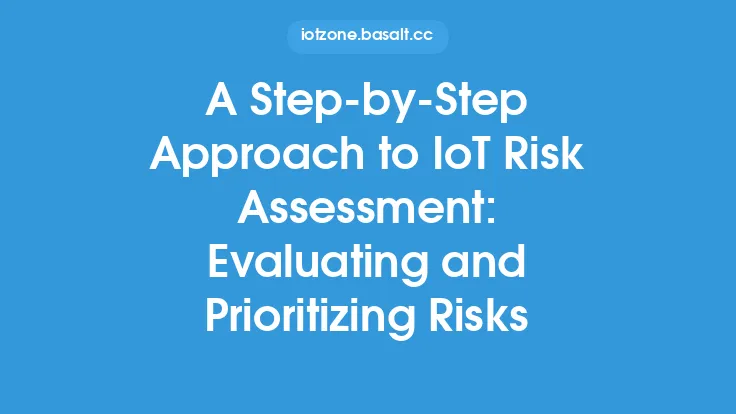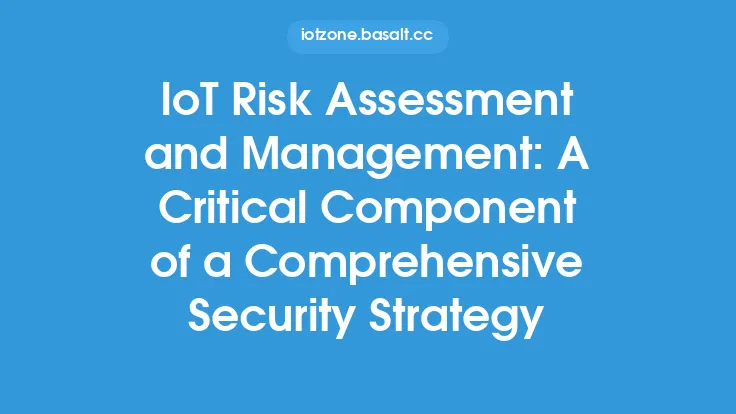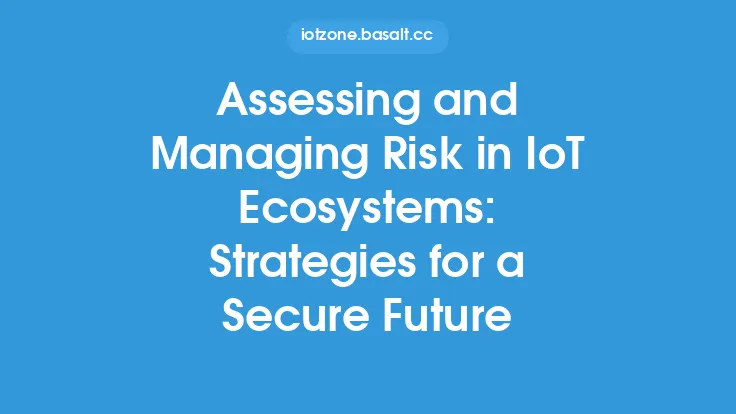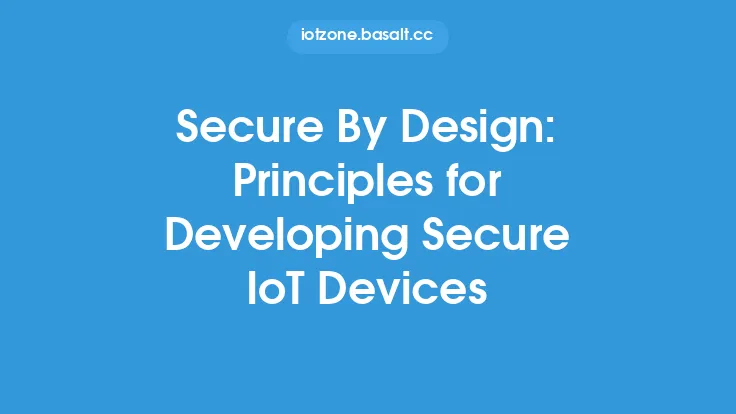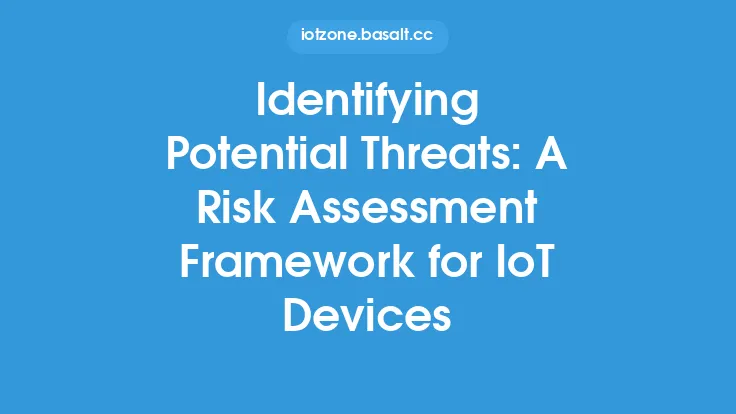Developing an effective risk assessment plan is crucial for organizations implementing Internet of Things (IoT) solutions. The increasing number of connected devices has created a vast attack surface, making it essential to identify and mitigate potential risks. A well-structured risk assessment plan helps organizations to prioritize their security efforts, allocate resources effectively, and ensure the confidentiality, integrity, and availability of their IoT systems.
Introduction to Risk Assessment in IoT
Risk assessment is a systematic process used to identify, analyze, and evaluate potential risks associated with an organization's IoT implementation. It involves identifying the assets that need to be protected, the threats that could affect those assets, and the vulnerabilities that could be exploited by those threats. The goal of risk assessment is to provide a comprehensive understanding of the potential risks and to prioritize them based on their likelihood and impact.
Identifying Assets and Threats
The first step in developing an effective risk assessment plan is to identify the assets that need to be protected. In the context of IoT, assets can include devices, data, networks, and systems. Organizations should consider the type of data being collected, transmitted, and stored by their IoT devices, as well as the potential consequences of a security breach. Threats to these assets can come from various sources, including hackers, malware, denial-of-service (DoS) attacks, and physical tampering.
Analyzing Vulnerabilities
Once the assets and threats have been identified, the next step is to analyze the vulnerabilities that could be exploited by those threats. Vulnerabilities can include weaknesses in device firmware, software, or hardware, as well as configuration errors or inadequate security controls. Organizations should consider the potential vulnerabilities in their IoT devices, networks, and systems, and evaluate the likelihood of a successful attack.
Evaluating Risk
After identifying the assets, threats, and vulnerabilities, the next step is to evaluate the risk. Risk evaluation involves assessing the likelihood and potential impact of a successful attack. Organizations should consider the potential consequences of a security breach, including financial loss, reputational damage, and harm to customers or employees. The risk evaluation should also consider the effectiveness of existing security controls and the potential for new threats to emerge.
Prioritizing Risks
Once the risks have been evaluated, the next step is to prioritize them based on their likelihood and potential impact. Organizations should focus on mitigating the risks that are most likely to occur and have the greatest potential impact. This involves allocating resources effectively and implementing security controls that are proportionate to the level of risk.
Implementing Security Controls
Implementing security controls is a critical step in mitigating the risks associated with IoT implementations. Security controls can include technical, administrative, and physical measures, such as encryption, firewalls, access controls, and secure coding practices. Organizations should consider the effectiveness of their existing security controls and implement new controls as needed to mitigate the identified risks.
Monitoring and Reviewing
Finally, organizations should continuously monitor and review their risk assessment plan to ensure that it remains effective and relevant. This involves regularly updating the plan to reflect changes in the organization's IoT implementation, as well as emerging threats and vulnerabilities. The plan should also be reviewed and updated in response to security incidents or breaches, to ensure that lessons are learned and improvements are made.
Technical Considerations
From a technical perspective, developing an effective risk assessment plan for IoT implementations involves considering a range of factors, including device security, network security, data security, and system security. Organizations should consider the use of secure communication protocols, such as TLS or DTLS, to protect data in transit. They should also consider the use of encryption to protect data at rest, as well as secure key management practices to ensure that encryption keys are properly generated, distributed, and managed.
Network Security Considerations
Network security is a critical aspect of IoT security, and organizations should consider the use of firewalls, intrusion detection systems, and virtual private networks (VPNs) to protect their IoT networks. They should also consider the use of secure network protocols, such as CoAP or MQTT, to protect data in transit. Additionally, organizations should consider the use of network segmentation to isolate IoT devices and prevent lateral movement in the event of a security breach.
Data Security Considerations
Data security is also a critical aspect of IoT security, and organizations should consider the use of encryption to protect data at rest and in transit. They should also consider the use of secure data storage practices, such as secure databases or data lakes, to protect sensitive data. Additionally, organizations should consider the use of data loss prevention (DLP) tools to detect and prevent unauthorized data transfers.
System Security Considerations
System security is a critical aspect of IoT security, and organizations should consider the use of secure system design principles, such as secure coding practices and secure system configuration. They should also consider the use of secure system updates and patch management practices to ensure that IoT systems are kept up to date and secure. Additionally, organizations should consider the use of secure system monitoring and incident response practices to detect and respond to security incidents.
Conclusion
Developing an effective risk assessment plan is crucial for organizations implementing IoT solutions. By identifying and mitigating potential risks, organizations can ensure the confidentiality, integrity, and availability of their IoT systems. A well-structured risk assessment plan involves identifying assets and threats, analyzing vulnerabilities, evaluating risk, prioritizing risks, implementing security controls, and continuously monitoring and reviewing the plan. By considering technical, network, data, and system security factors, organizations can develop a comprehensive risk assessment plan that protects their IoT implementation from emerging threats and vulnerabilities.

